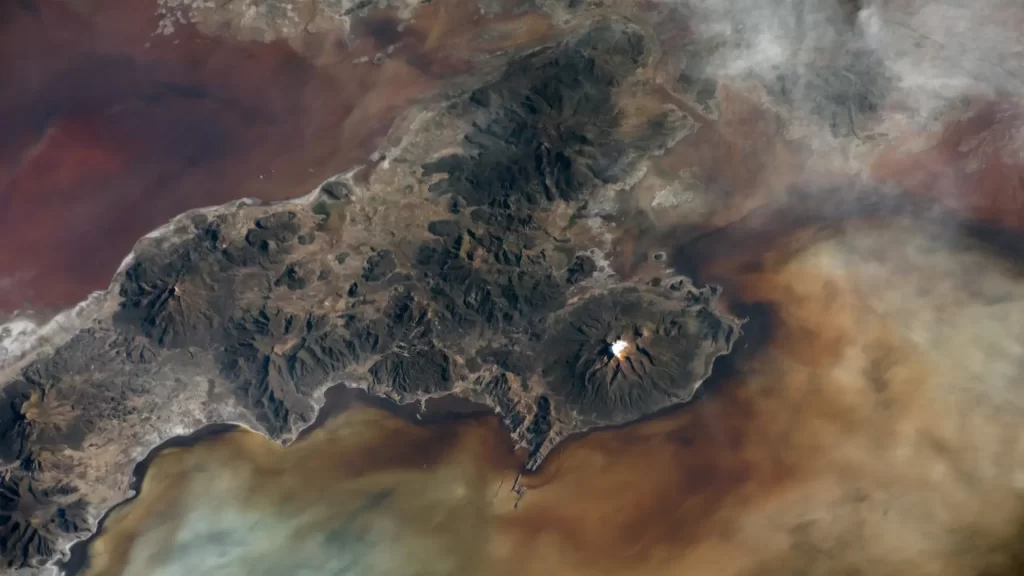An astronaut aboard the International Space Station (ISS) captured this unmissable image of Tonuba volcano, which is located on a peninsula between two of Bolivia’s largest salt flats, Salar de Uyuni and Salar de Cuipasa.
These salt flats have variable sediment cover and microbial populations, resulting in areas of darker and lighter colors on the surface.
Tonuba volcano is located in the center of the southern Altiplano, or Andean plateau, and reaches a height of 5.3 kilometers. A volcano is a compound cone: a large, complex volcano often covered with lava flows, lava deposits, and domes. It was last active 1.4 million years ago, and Tonoba is now considered dormant.
The sides of the volcano’s cone are cut by valleys eroded by ancient glaciers and stream flows. Lava domes and flows appear on the eastern side of Tonuba, and the volcano is adjacent to other craters and eroded volcanic fields, including Jayu Khota and Tittivilla.
Salt flats are usually bright white when viewed from orbit. But during Bolivia’s rainy season, rivers can carry microbial-rich sediments and dark-colored volcanic minerals and cover the plains. (Such an event was happening at the time this photo was taken, which was taken on February 5, 2022 with a Nikon DS digital camera.)
Both Uyuni and Coipasa are remnants of saline paleolagos (Paleolithic lakes) that dried up thousands of years ago. Currently they look like dry lake floors covered in salt crusts.
Image provided by the International Space Station (ISS) Crew Earth Observation Facility.





